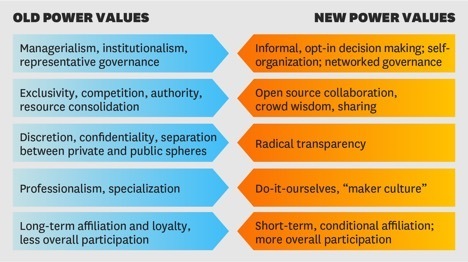Making Your Content Go Viral: Ideas From Real Learning
The Real Learning Project is a book, site, and exercises designed to show people how to learn to learn socially, experientially, and informally. Real Learning is self-instructional and self-contained, created with the individual in mind.
We expect some organizations will want to apply the lessons of Real Learning more widely.
- To support organizational renewal and reinvention.
- To become true learning organizations.
- To establish a more open, sharing, collaborative culture.
- To adopt social business, Radical Management, digital transformation, and other models.
- To enable workers and managers to take charge of their own learning.
- To be more responsive to change, more sustainable.
- To consolidate groups after a merger or acquisition.
- To focus new hires in onboarding programs.
- To build mentoring and coaching skills into management develop programs.
- To delegate decision-making to the operational level.
- To work smarter overall.
- To take advantage of the benefits of informal learning.
- To become a leaner organization with more generalists.
- To get everyone up to a baseline standard of self-directed learning skills.
- To become more technologically advanced.
- To exploit wikis, social networks, videoconferencing, and teamwork to the fullest.
- To shift from a training to a performance orientation.
- To unleash the power of collective intelligence.
- To open the process of innovation to all workers.
- How does one apply self-instruction to a group?
Teams and organizations can use Real Learning to help small groups and entire companies to better engage, collaborate, learn, share, and make decisions.
Shift a group from old power to new.
In Understanding New Power (HBR December 2014), Jeremy Helmans and Henry Timms capture the essential shift from centralized power to distributed power. The characteristics on the left are vestiges of the pre-web industrial era; those on the right are the values of Web 2.0, democratization, and Real Learning.
Harvard Business Review Visual Library, December 1, 2014
If you are making this journey, here are some things to consider:
- Form a task force.
Assemble a task force of influential people to monitor progress and communicate results. Make the task force responsible for change management. The task force will keep stakeholders up to date, keep track of adoption, trumpet successes, set leader expectations, create a vision, eliminate obstacles to change, plan for short-term wins, and tie project outcomes to organizational success.
In selling the value of Real Learning, the task force should focus on business outcomes, not the learning capabilities that led to them:- Better, more knowledgeable customer service.
- Faster response time.
- Higher morale.
- Reduced turnover.
- Greater flexibility.
- Bottom-up innovation.
- Collective intelligence.
- Governance.
Real Learning can work miracles if people are free to choose their own path, something they truly believe in. You can’t control freedom without strangling it. Real Learning pays big benefits - so long as you give it room to thrive. Governance means someone having the clout to represent executive management as ombudsman. Beyond having a social media policy and code of ethics, not much documentation is required. - Align Real Learning with real needs.
Learning never exists in a vacuum. You have to learn something, not just learn about learning per se. Couple Real Learning to a topic the group needs to master, e.g. becoming a real-time business, embracing Six Sigma, implementing new enterprise software, entering a new marketplace, or getting our team back on track. Hitchhike with a winning cause. - Enlist sponsors and champions.
As with any project, the more support from the top of the organization, the better. Leaders should model the behavior they are looking for. Managers must make time for learning, practice, and reflection. Find champions -learning junkies and working smarter enthusiasts- to pilot Real Learning and demonstrate how it’s done. - Shift the culture.
Work on developing a culture that is open, sharing, tolerant of mistakes, and respectful. Reward individual behaviors such as working out loud, reflecting on successes and failure, creating knowledge as well as consuming it, and taking on daring but not foolish challenges. - Study group.
The first year I attended business school, every evening before class I would join four friends to discuss the three cases that would be discussed the following day. We were a diverse group. One fellow was so conservative, risk-averse, and Republican, that I had to hold back from taunting him. Another guy was a convicted felon who refused to let his wife leave the house without him or listen to the radio. The third fellow held views similar to mine. Diversity helped: We had different perspectives on the cases.
I learned more in the study group than I did in class. Figuring things out with your peers is powerful medicine.
Form your own study group. You have my permission. Enlist a colleague or two who’ll work their way through Real Learning with you in tandem. - Lesson plan.
Hells, bells, you don’t need a lesson plan. Nobody’s teaching here. Real Learning defines the topics. Go through them at a pace that’s comfortable for your group. Skip around if you like. There is no specific order. - AA-style.
“Hi, my name’s Jay and I’m powerless over my own learning”. Join with other people who want to work smarter and improve their position in life. Be authentic. Tell stories. Get a sponsor should you lose the faith. Attend meetings. Come if you feel like you’ve hit bottom, don’t know what you’re doing, and need someone to toss you a life ring. Host a Meet-Up or post an announcement on the bulletin board. - Team-driven.
Teams are defined by their context. An agile development team is not like the team that meets every morning before Whole Foods opens or the Honda workers doing jumping jacks before heading to the production line. Four people who have worked together for years is a different team than eight contentious people with low morale and high turnover. There are great teams and sick teams and teams that cry out to be fixed.
Real Learning focuses on practice. People learn socially, sharing with others, respecting others, and working smarter. They reflect on successes and failures, understanding how they can make the team healthier and more productive. Real Learning is a catalyst for organizational development, for one of the methods of learning to learn is teamwork.
Ask yourself how your team might benefit from adopting Real Learning practices and what that would be worth to you? Content, books, community, FAQ, monthly prep teaching instructions via video, transcript, etc. costs less than $300 per person for a team of six. The big investment is people’s time: several hours a week doing exercises, working with a study-buddy, scouring the web, goal setting, practice, and more. Probably add a few hours at home or the “third place” during downtime for most people.
Some teams, when the time is right and demand lulls make Real Learning the focus of management development and have participants mentor the rest of the organization on how to move forward. - Book club.
Six people agree to read and discuss Real Learning. They skim the book rapidly; in an hour, they “get it”. They come together to answer “How could this improve our team?” - Support the project with your corporate social network.
Create a learning community on your in-house social network to coordinate and share activities. Yammer, Chatter, Jing, Slack, SocialCast, or IBM Connections will do. The basic functionality is not that different from one platform to the next. Encourage participants to share their discoveries. Put a community manager in charge of pruning, reorganizing, and keeping the conversations active. - Niches before Big Bang.
Try Real Learning with a few enthusiastic teams or small groups before taking implementation to the entire organization. Pilot tests provide examples, an opportunity to fix glitches, and a means of localization. Besides, why risk it all when you can build on experience incrementally? - Keep individual self-study option open.
Encourage individual go-getters to participate in Real Learning on their own or in dyads no matter what other programs you have going. The more experiments, the better. Announce the availability of Real Learning to everyone who might want it.
Real Learning has had a great reception among experienced people, most with advanced degrees who want to audit the way they learn and make improvements. A person who doesn’t care about learning might need it, but will never be persuaded it’s something worth investing in. In contrast, the learning enthusiast will work hard to advance from 90 percent effectiveness to 95 percent. - Affirm your values.
When implementing Real Learning on a large scale, it’s a good idea to make a company wide commitment to your new philosophy on learning. Here are the values we developed with a client - and took an oath to follow:- We are open and transparent.
- We narrate our work. Need to share.
- We value conversation as a learning vehicle.
- We make our work accessible to others.
- Our bottom line is business success.
- We know learning is work; work is learning.
- We are a learning organization.
- We value time for self-development and reflection.
- We recognize that reflection is a key to learning.
Changing behavior requires continual reinforcement, so be ready to tackle the concern and resistance that some people may have toward becoming a more collaborative organization.
Learning is social; connect people.
People learn with and through others, so set up ways for people to introduce themselves and select learning partners.
Effective managers encourage their team members to buddy up on projects, to shadow others and to participate in professional social networks. People learn more in an environment that encourages conversation, so make sure you’re fostering an environment where people talk to each other.
Several years ago, the local paper in Ottawa carried a story about voter betrayal. The politicians had gone back on their promise to provide every elementary student with a computer. It would be 2 kids per machine. I smiled. The kids will learn a lot more this way.
Adults need to take advantage of the social nature of learning. Have two or three people go through eLearning together, before a single screen. Encourage them to talk. Retention will skyrocket, and conversation will mitigate the boredom of most learning.
Become A Meta-Learner Yourself
If you are personally drawn in by this subject, by all means consider being a mentor to your colleagues and friends. No one learns more than a mentor. You might host some online events or bring communities together. It’s intoxicating.
Common Goal
I take my goal from my friend Howard Rheingold. We’re forming a community of co-learners. That’s not a bad line to use to spark a ground-up community of real learning practice where you work.








